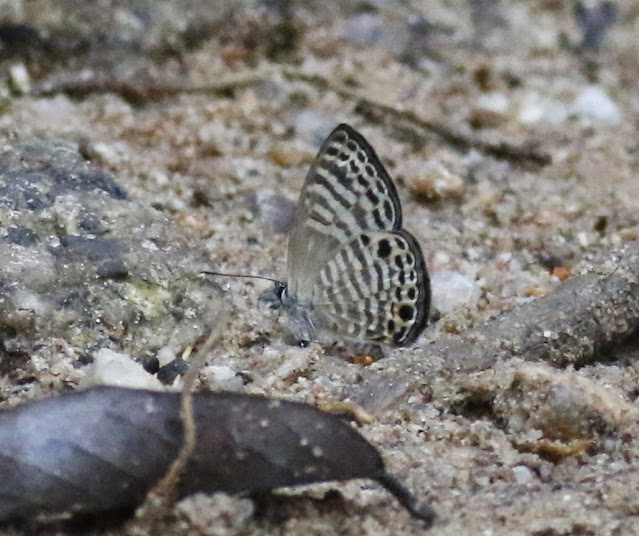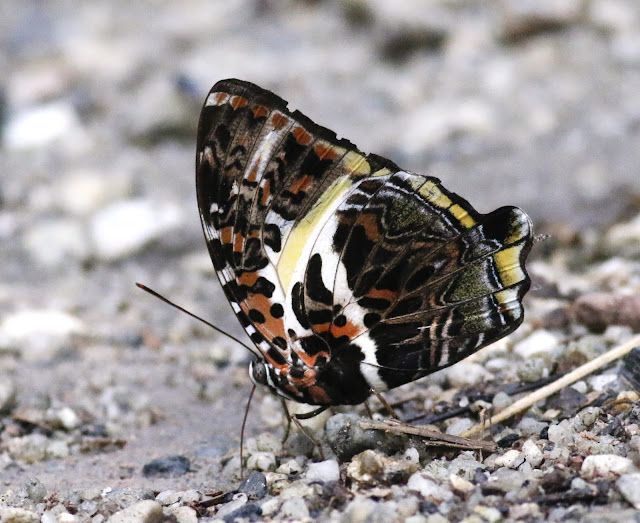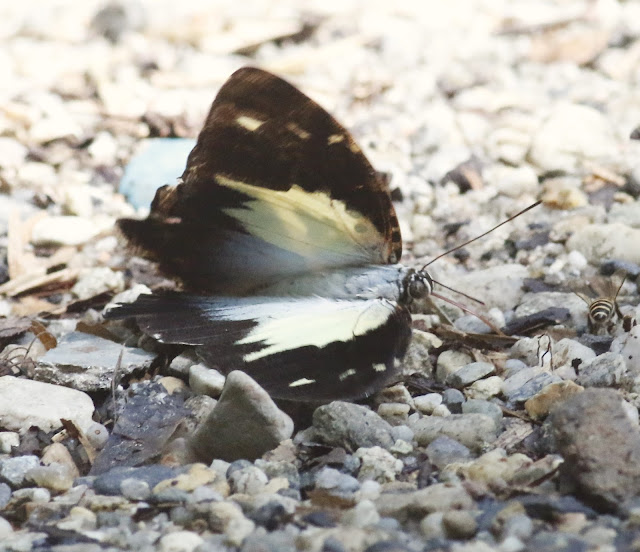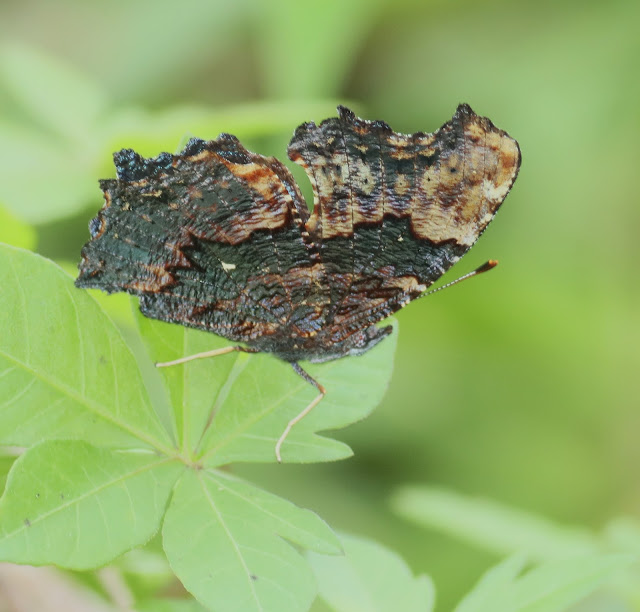Here is the continuation of my butterfly adventure in the forest of Pahang. This time and as usual, there were several nice and rare butterflies appearing at the same butterfly survey spot. Survey time was from 9.30am to about 2.20pm. Weather was a bit cloudy and with occasionally sunshine.
I have selected this rare female butterfly as my main photo this time.
Constable (Dirchorragia nesimachus deiokes)
I am so glad to see this rare butterfly and apparently the female species of this butterfly is more stunning than the male. This species is rare over here.
When in flight, she was like a SR17 - super fast. My mega lifer !
Its underside is equally stunning.
Apparently this species is a close relative to the Popinjay (Stibochiona nicea) and is absent from Singapore at this point of time.
It puddle just for awhile and once filled, she flew away and didn't return.
Have been wanting to photograph this Polyura for a long time.
Polyura hebe chersonesus (Plain Nawab)
This is the only one which came to puddle.
For comparison - this is a Common Nawab (Polyura athamas)
Common Nawab (Polyura athamas).
Not sure which is more common than the other.
They can be quite common like in this place but generally they are uncommon in many places I believe.
Here is an uncommon Nawab.
Jewelled Nawab (Polyura delphis concha)
Only saw it twice in my lifetime.
This Nawab is slightly larger than the earlier Nawabs.
This one is a Lesser Cruiser (Vindula dejone erotella)
This is strictly a forest species and a scarce one !
Here is another uncommon species.
This is a Branded Yeoman (Algia fasciata fasciata)
My lifer.
There are not many times you can see a Curetis opening up its wings.
This is a Curetis feeda (Parallel Sunbeam)
Open wings and underwings features will surely confirm its ID.
Looks like quite a friendly Parallel Sunbeam (Curetis freda)
The next Curetis ID can be quite tricky and biologist usually doesn't like speculations.
For the sake of discourse - I will ID this one as a Curetis sperthis sperthis (Rounded Sunbeam). Unfortunately I do not have a dorsal shot of its wings.
Now we move on to a slightly 'easy' butterfly
This is a Banded Blue Pierrot (Discolampa ethion thalimar)
Here it is again in the company of two Anderson's Grass Yellow / One-spot Grass Yellow (Eurema andersonii andersonii). It has a very nice upperside wing colours.
Banded Blue Pierrot (Discolampa ethion thalimar) with an Elbowed Pierrot (Caleta elna elvira)
Puddling alone on the sand.
Banded Blue Pierrot (Discolampa ethion thalimar)
This one should be easy.
Common Hedge Blue (Acytolepis puspa lambi)
This is a Prosotas aluta nanda (Barred Line Blue)
Nacaduba berenice icena (Rounded Six Line Blue)
White Four-line Blue (Nacaduba angusta kerriana)
After the small ones then came the bigger ones.

Blue Catseye (Coelites epiminthia)
In the forest at times you can come across this Bamboo Tree-Brown (Lethe europa malaya). This is a male and I would say that this is an uncommon butterfly.
They can be uncommon at times but at the right spot, they can be fairly common
Tawny Rajah (Charaxes bernardus crepax)
This one can be fairly common in the forest especially near some wet sandy patches.
Straightline Mapwing (Cyretis nivea nivalis)
This one looks quite pristine.
Malayan Owl (Neorina lowii neophyta)
Most of the time you can see them flying around rather than puddling.
Here it is again - Glorious Begum (Agatasa calydonia calydonia)
When it is puddling, it will allow you to come quite close unless you walk around like a baby elephant.
Another big one.
Red Helen (Papilio helenus helenus)
This is a Branded Straw Ace (Pithauria marsena)
This one is quite a large skipper and is fairly common at this location.
I didn't want to photograph this moth (yes it is a diurnal moth!) but sifu informed me that it is a rare moth which looks like a wasp ! Unfortunately I have forgotten its name at the moment.
THAT'S ALL FROM THE FOREST OF PAHANG.



































.JPG)











































.JPG)